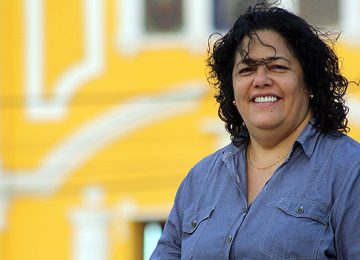Although society has advanced in many aspects such as science, technology, communications, culture and mindset, sex is still considered a taboo subject in the 21st century. Nowadays, people talk about sex with a little freedom, but shyness and prevention regarding the topic still prevail.
In an interesting article by Barbara Montes, a specialist in sex education and sexuality, she dares to define several types of relationships ranging from traditional monogamy to open relationships such as polyamory, with the purpose of breaking various traditional schemes.
“Knowing the different models of relationships can make us consider our own relationship model, questioning the preferences we had until now and helping us to open ourselves to other possibilities. Or at least it will help us to be more tolerant towards other ways of understanding relationships that are different from our own,” says Montes.
The expert talks about the concept of relational orientation, which she explains as the way in which sex-affective relationships are established with other people, according to how they feel and towards whom they feel.
This classification can help to make other options visible and explain the diversity that can exist between two people who love and communicate with each other:
- Monogamy or closed relationship: in which the couple requires both affective and sexual exclusivity. They are divided into:
Traditional or ideal monogamy: in this type the couple cannot feel affective-romantic emotions outside the relationship, nor feel attraction for other people. It is summarized in that “they only have eyes for each other”, an unrealistic concept.
Realistic monogamy: in this type, the couple may notice or be attracted to other people and even discuss it with their partner, but still decide to be with only one person.
- Open or non-monogamous relationships: these are couples in which affective and sexual exclusivity, or both, are broken. It may also involve relationships between several people or allow sexual relations outside of that nucleus.
In this type of relationship, both parties can have sporadic relations with another person, because they consent to sexual freedom. Here are framed:
Polyamory: a concept that has begun to be used by many couples. It means to maintain more than one intimate and loving relationship that may or may not be sexual, and that can be lasting and simultaneous with several people.
This type of relationship is achieved with the full consent and knowledge of all parties involved and usually goes beyond the physical and sexual aspect. It is classificated as this:
Hierarchical polyamory: several relationships happen simultaneously with one relationship being the main one.
Non-hierarchical polyamory: in this type all relationships are at the same level. There is no main relationship that is above any other; all of them have the same importance.
Polyfidelity: these are loyal people within a circle of several people (usually more than two) who decide not to open up to anyone else. None of the parties will maintain other relationships.
Triangle type relationships: this is another type of open relationship in which one of the parties has a relationship with other two people, but these two have no relationship with each other.
Relational anarchy: they can have relationships with many people simultaneously, these being different from each other. Each relationship is established naturally, in a respectful way, without prioritizing one over the other.
Swingers: are those couples who participate and practice the exchange of partners on a regular basis. The term comes from the English word swing. Although it sounds contradictory, these couples have a stable relationship in which they consent to have relationships with other people or couples who are also swingers.
Swinging is a lifestyle that is being replicated more frequently, according to analysts of the trend. There are swingers’ clubs, mobile apps or private groups where meetings are arranged in advance.
According to Montes, there is not one type of relationship that is better than another, but rather the type of relationship that works the best for each person: “Once you know all the options and alternatives, think about what type of relationship model you will feel more comfortable with and communicate it to the people you are in a relationship with. Communication and honesty will always be the best foundation for any type of relationship,” she says.
Traducción del español: Catalina Oviedo Brugés.
















